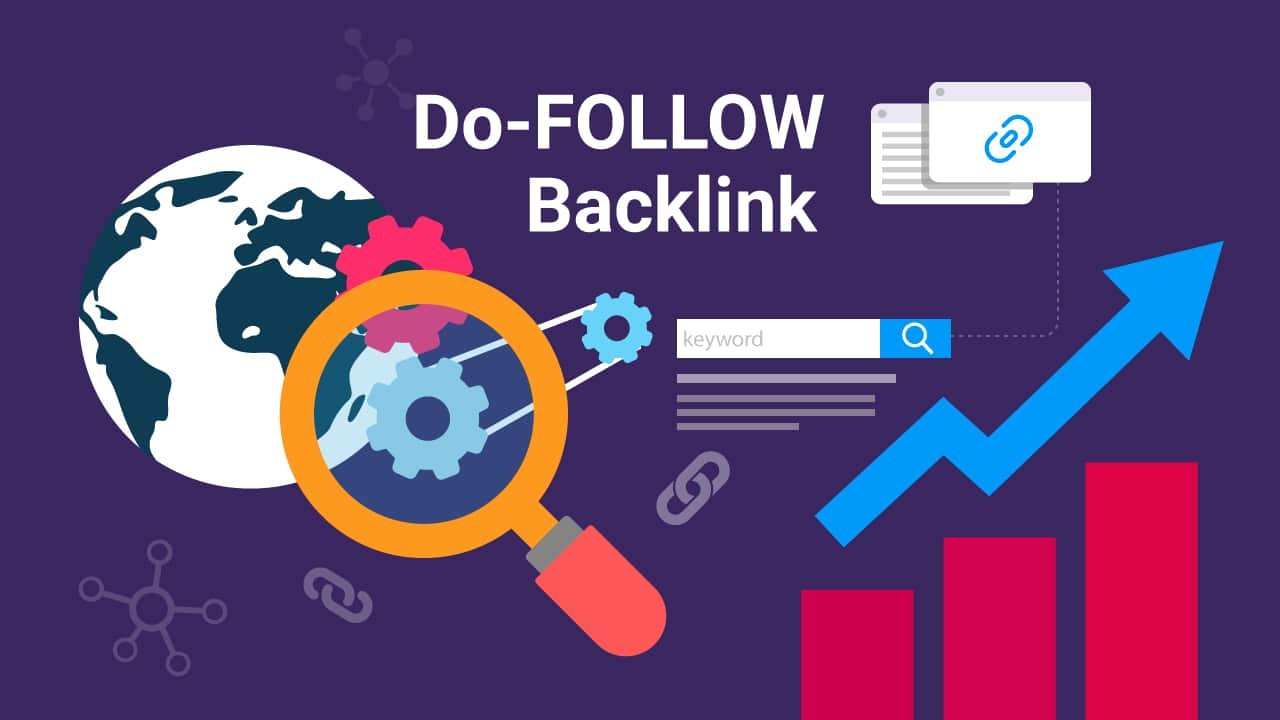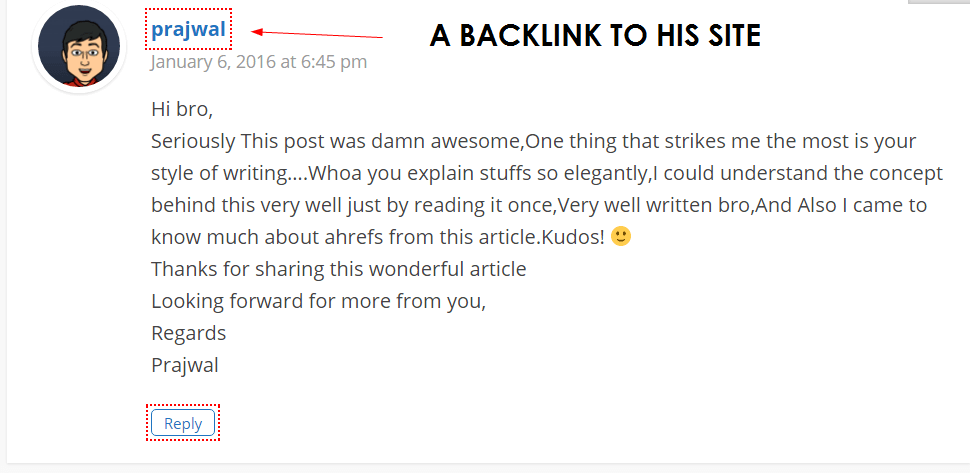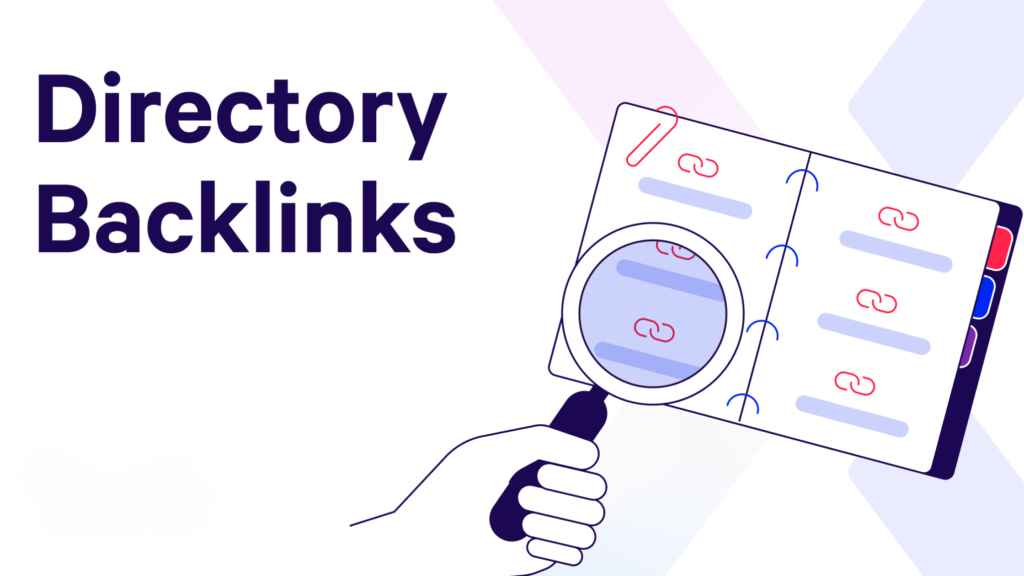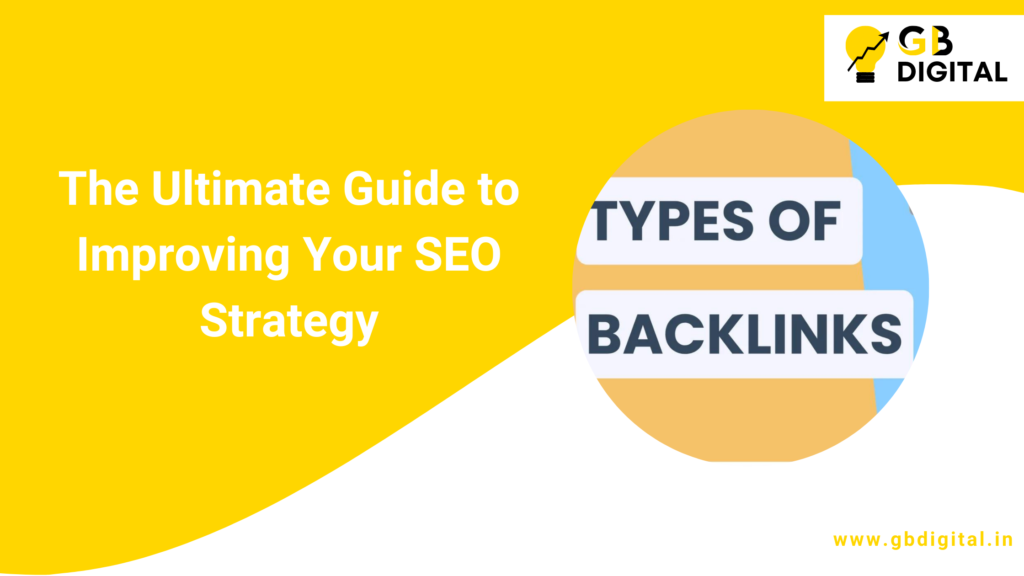Backlinks play a vital role in determining the success of your website’s search engine ranking. To improve your SEO strategy, understanding the different types of backlinks is essential. In this comprehensive guide, we’ll explore various types of backlinks, their importance, and how to effectively use them to boost your website’s SEO performance.
What Are Backlinks?
Backlinks, also known as inbound or incoming links, are links from one website to another. When a site links to your website, search engines view it as a vote of confidence, which can positively influence your rankings in search results. The more quality backlinks you have, the higher your chances of improving your SEO strategy.

Why Are Backlinks Important for SEO?
Backlinks signal to search engines that your content is valuable and trustworthy. They help increase organic traffic, improve domain authority, and build relationships with other websites. But not all backlinks are equal. The types of backlinks you use can either enhance or harm your SEO strategy, so it’s crucial to know the differences.
Types of Backlinks
Understanding the different types of backlinks will help you build a stronger SEO strategy. Let’s dive into the most common types and how they impact your website’s performance:
Dofollow Backlinks
Dofollow backlinks are the most common and sought-after type of backlink. These links pass “link juice” from the linking site to the linked site, directly impacting the linked site’s search engine rankings. The more dofollow backlinks you get from high-authority websites, the better your SEO will perform.

How to Get Dofollow Backlinks:
- Guest posting on reputable sites
- Building relationships with industry influencers
- Creating high-quality, shareable content
Nofollow Backlinks
Unlike dofollow backlinks, nofollow backlinks don’t pass “link juice” to your site. These are often used in blog comments, forums, or social media posts. While they don’t directly affect your rankings, they still bring traffic and can enhance your website’s visibility.

Best Practices for Nofollow Backlinks:
- Comment on relevant blogs with valuable insights
- Use them to create a natural link profile
- Ensure a mix of nofollow and dofollow backlinks
Editorial Backlinks
Editorial backlinks are some of the most valuable types of backlinks. These are links given naturally by other websites when they find your content worthy of reference. They are often placed within the content of high-authority sites, providing a significant boost to your SEO.

How to Earn Editorial Backlinks:
- Create high-quality, unique content that stands out
- Write detailed guides, case studies, and research papers
- Collaborate with influencers and journalists
Guest Post Backlinks
When you write a guest post for another site, you usually receive a backlink in return. Guest post backlinks are an effective way to build authority and visibility, provided the site you’re contributing to is relevant and reputable.

Guest Posting Tips:
- Only contribute to websites within your industry
- Focus on quality over quantity
- Include natural backlinks within the content
Profile Backlinks
Profile backlinks come from creating a profile on various websites and leaving your website link in your bio. While they may not hold as much weight as editorial or guest post backlinks, they still contribute to your backlink profile.

Best Practices for Profile Backlinks:
- Use real and professional platforms like LinkedIn or industry-specific sites
- Ensure your profile is complete and accurate
- Include links on authoritative directories
Comment Backlinks
These are backlinks you get from leaving a comment on a blog or forum. While most comment backlinks are nofollow, they can still bring in traffic and improve your website’s visibility. However, excessive use of comment backlinks can be viewed as spammy by search engines.

How to Effectively Use Comment Backlinks:
- Comment on high-quality, relevant blogs
- Ensure your comments add value to the discussion
- Avoid overusing them to prevent penalties
Directory Backlinks
Submitting your website to directories can earn you backlinks, although their value has decreased over time. Only high-quality, niche directories are worth pursuing for SEO purposes.

How to Choose Directories for Backlinks:
- Use industry-specific directories
- Avoid spammy or low-quality directories
- Ensure the directory is reputable and has a clean history
Social Media Backlinks
Links from social media platforms like Facebook, Twitter, LinkedIn, and Pinterest may not pass direct SEO value, but they do drive traffic to your site. Search engines take this traffic into account when ranking your site.

How to Maximize Social Media Backlinks:
- Share your content consistently on all social media platforms
- Engage with your audience to encourage shares and likes
- Collaborate with influencers for broader reach
Paid Backlinks (Sponsored)
Paid backlinks come from websites that offer to link to your site in exchange for payment. While this may seem like an easy way to get backlinks, search engines frown upon buying links, and it can lead to penalties if done excessively.

Should You Use Paid Backlinks?
- Avoid relying on paid backlinks for SEO
- If you use them, ensure they’re disclosed as “sponsored”
- Focus on building organic backlinks instead
Broken Link Backlinks
Broken link building is an excellent way to earn backlinks by finding broken links on other websites and offering your content as a replacement. This helps the website owner fix their broken link while providing you with a valuable backlink.

Steps for Broken Link Building:
- Find websites in your niche with broken links
- Offer your content as a relevant replacement
- Reach out politely to webmasters
Press Release Backlinks
Press release backlinks come from distributing press releases online. When picked up by media outlets, your press release can generate backlinks from news sites, which adds to your site’s authority.

Maximizing Press Release Backlinks:
- Create newsworthy, engaging press releases
- Distribute them through reputable press release distribution platforms
- Target industry-specific media outlets
How to Build a Balanced Backlink Profile
Now that you understand the different types of backlinks, it’s crucial to build a balanced backlink profile. A diverse backlink portfolio can significantly enhance your SEO strategy. Here’s how you can achieve this:
1. Mix of Dofollow and Nofollow Links
Having a natural mix of dofollow and nofollow links creates a balanced and healthy backlink profile, signaling to search engines that your website is genuine.
2. Focus on High-Quality Links
Always prioritize getting backlinks from reputable and high-authority sites. Even one quality backlink can be more valuable than several low-quality ones.
3. Avoid Black Hat SEO Tactics
Steer clear of any black hat SEO techniques such as buying links, spamming comment sections, or using irrelevant directories. These can result in penalties from search engines.
4. Regularly Audit Your Backlinks
Keep track of your backlink profile and disavow any harmful or low-quality links. This ensures that your SEO strategy remains effective and secure.
Conclusion
The types of backlinks you acquire can make or break your SEO strategy. By focusing on high-quality, diverse backlinks, you can improve your website’s authority, boost organic traffic, and climb the search engine rankings. Stay consistent, create valuable content, and build meaningful relationships with other websites to achieve long-term SEO success.








